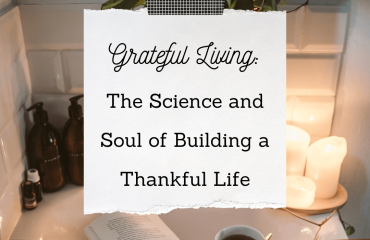
The autonomic nervous system (ANS) manages our bodily functions and maintains homeostasis. The ANS is divided into two main branches, the sympathetic nervous system and the parasympathetic nervous system. Both branches work in opposition to maintain balance and adapt to physiological responses to internal and external stimuli.
Fight, Flight, or Freeze
Our bodies are beautifully designed with an alert system to danger. This alert system, the sympathetic nervous system (SNS), tells us to either fight, flee, or freeze when danger is near. Everyone’s sympathetic nervous system activates differently.
During this time, our body heightens our alertness and prepares us for action by releasing adrenaline into our body. Adrenaline increases our heart rate, opens our airways, elevates blood sugar levels, and redirects blood flow to our limbs. An increase in heart rate pumps more blood through our body to prepare us for physical exertion. The blood is redirected away from less emergent functions like digestion and reproduction so our limbs can receive more oxygen and nutrients. Our pupils are dilated to heighten our situational awareness by increasing the amount of light entering the eyes. When adrenaline is released, our liver is prompted to release glucose into the blood stream to provide an energy source for the increase in the body’s activity.

Rest, Digest, Reproduce
When we aren’t fleeing or fighting off grizzly bears, our parasympathetic nervous system (PNS) works to slow our heart rate, activate our digestive system, and conserve our energy for the next grizzly encounter. The role of our PNS is to create a state of recovery, regeneration, and relaxation.

The Vagus Nerve
The Vagus Nerve is our 10th cranial nerve and responsible for our ability to rest, digest, and reproduce. This nerve is the line of communication between our internal organs and the brain. How “toned” our vagus nerve is relates to how well we respond to and regulate our stress.
**Fun fact, our gut bacteria affects our vagus nerve activity and benefits our mood and anxiety.
It’s a Balancing Act
What happens to us if we can’t bring ourselves out of our “fight or flight” state? Obviously, we aren’t fighting off bears every day, but we are dealing with stressors our ancestors never faced. Our nervous system does not understand that our stressor isn’t as severe as a bear attack. A threat to our homeostasis is still a threat. Our nervous system does not understand the concepts of time.
If left untreated, an unregulated nervous system may adversely affect our immunity, cardiovascular health, mental clarity, and inhibit our ability to navigate through the demands of everyday life. If a stressful event or trauma that occurred years ago was never processed completely by the nervous system, it will still affect our nervous system whether it was 2 minutes or 20 years ago.
Signs of Nervous System Dysregulation
- Continuous feelings of stress
- Difficulty sleeping or staying asleep
- Enhanced irritability or unexplained mood changes
- Chronic pain, headaches, or digestive issues.
If you have a spare moment, watch the YouTube videos “Impala Escapes Death & Shakes off Stress” or “Polar Bear Shaking Trauma.” In the first video, the Impala takes moments after a near death experience to regulate its nervous system before running off into the wilderness. In the second, you’ll see a polar bear shaking to regulate its nervous system after experiencing a traumatic event. If these animals did not involuntarily shake away their stress, they would continue to live in their “fight or flight” mode. Everything would be seen as a threat.
As human beings we aren’t programmed to automatically shake away our stress and trauma. Luckily, there are many different ways to help regulate our nervous system. We don’t need to do every technique, but it is important to find a technique(s) that is best for us individually.
Ways to Help Regulate Our Nervous System
Breath Work
Try:
- Breathing in for 5 seconds
- Hold your breath for 5 seconds
- Exhale for 5 seconds
Tip: When inhaling, fill your belly up like a balloon!
Movement
- Walking
- Dancing (my favorite thing to do while cooking)
- Somatic Exercise
- Yoga
- SHAKING (If you’re afraid of looking weird, try shaking your hands and wrists one at a time first.)
EFT Tapping
There are plenty of videos online about the benefits of EFT tapping.
Get Vocal!
A branch of our vagus nerve (the recurrent laryngeal nerve) controls swallowing, voice production, and breathing. Vocal activities like singing, humming, chanting, and yelling are good for stimulating the vagus nerve. Stimulating the vagus nerve assists with decreasing heart rate, blood pressure, and respiration.
Peripheral Vision Finger Wiggling
Say this five times fast! Just kidding. With this movement you start with your arms straight in front of you with index fingers pointed towards the ceiling. Slowly move your arms outwards as far as you can without inducing pain (though, we can help with pain…). Keep eyes forward but use your peripheral vision to look at your index fingers. Wiggle your index fingers. Try this for about 30 seconds to a minute.
Try these out and see which ones resonate with you. You can make it fun and try them out with your family and friends. Karaoke dance party anyone?
No matter which method you try, be sure to take some time for yourself.




